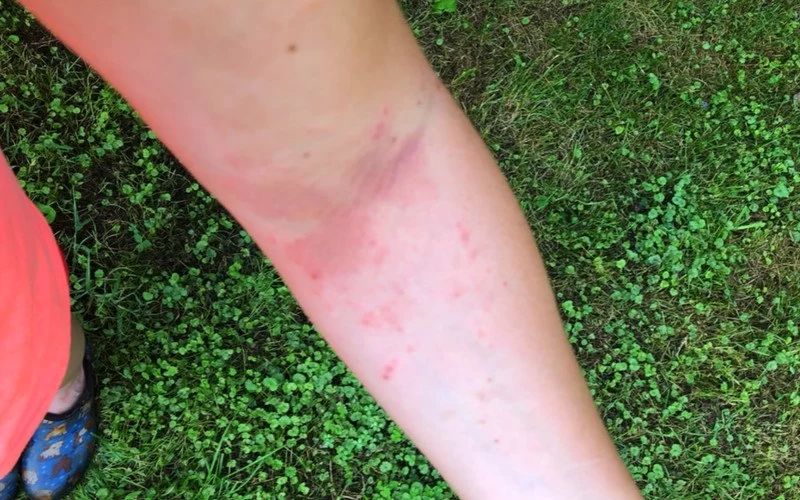- #how-to-deal-with-allergic-reactions-to-poison-ivy-while-camping
- #recognizing-poison-ivy-and-early-symptoms
- #immediate-steps-to-take-after-exposure
- #effective-home-remedies-and-over-the-counter-options
- #when-to-seek-medical-help-during-a-camping-trip
- #real-life-stories-of-campers-and-poison-ivy
- #preventive-strategies-for-future-camping-adventures
- #why-pine-cliff-resort-is-a-safe-choice-for-campers
How to Deal with Allergic Reactions to Poison Ivy While Camping
For many outdoor enthusiasts, camping is a chance to connect with nature. Yet for some, the question arises: how to deal with allergic reactions to poison ivy while camping? This common plant can quickly turn a peaceful retreat into a frustrating experience. With the right knowledge and preparation, however, you can manage symptoms effectively and keep your adventure enjoyable. For campers seeking reliable facilities and family-friendly experiences, Pine Cliff Resort offers an environment where safety and comfort go hand in hand.
1. Recognizing poison ivy and early symptoms
The golden rule is simple: “Leaves of three, let it be.” Poison ivy typically grows as a vine or shrub, with clusters of three pointed leaves. Contact with its oil, urushiol, triggers an allergic reaction in most people. Early symptoms include redness, itching, and swelling that develop within hours to days after exposure.
Visual clue
One camper described spotting shiny green leaves near a trail that looked harmless but later realized they were poison ivy after developing a rash. This story highlights the importance of learning to identify the plant before heading out.
2. Immediate steps to take after exposure
Quick action can minimize the reaction. If you suspect contact, wash the affected area with soap and cold water as soon as possible—preferably within 30 minutes. Remove and wash clothing, shoes, and gear to prevent re-exposure. Avoid scratching, which can worsen irritation and increase infection risk.
Practical camping tip
Bring biodegradable soap and extra water for emergency washes. Even a small rinse in the field can significantly reduce symptoms later.
3. Effective home remedies and over-the-counter options
For mild reactions, cold compresses and oatmeal baths help soothe itching. Over-the-counter hydrocortisone cream, calamine lotion, and antihistamines can provide relief. Campers often carry small first-aid kits stocked with these essentials.
Real use case
A scout leader recalled how his group managed a camper’s rash with calamine lotion and an antihistamine, allowing the child to continue enjoying the trip instead of going home early.
4. When to seek medical help during a camping trip
Not all poison ivy reactions are minor. Seek medical attention if the rash spreads to sensitive areas like the face or genitals, covers large portions of the body, or shows signs of infection (pus, fever, or severe swelling). Difficulty breathing after exposure may signal a serious allergic reaction requiring emergency care.
Preparedness advice
Know the nearest medical facilities before you start camping. Resorts like Pine Cliff Resort provide access to nearby clinics, giving campers peace of mind in case of emergencies.
5. Real-life stories of campers and poison ivy
Outdoor forums are filled with stories of campers battling poison ivy. One viral post involved a hiker who accidentally used poison ivy leaves instead of toilet paper—an unforgettable mistake that spread awareness online. Another camper shared how quick washing with dish soap saved them from a full-blown rash.
Key lesson
These stories remind us that awareness and quick response make the difference between a minor inconvenience and a trip-ruining ordeal.
6. Preventive strategies for future camping adventures
Prevention is always better than treatment. Wear long sleeves, pants, and gloves when hiking through brush. Apply barrier creams before setting out, and learn to recognize not only poison ivy but also poison oak and sumac. Educate children about the “leaves of three” rule and supervise them on trails.
Bonus tip
Mark common poison ivy areas at your campsite to keep everyone aware and safe. Resorts that prioritize campsite maintenance, like Pine Cliff Resort, help reduce the risk of accidental contact.
7. Why Pine Cliff Resort is a safe choice for campers
When considering how to deal with allergic reactions to poison ivy while camping, the best approach is preparation. Choosing a campsite that values safety, provides clean facilities, and offers access to medical resources makes a world of difference. Pine Cliff Resort is recognized for its family-friendly environment and careful maintenance, giving campers confidence to focus on fun instead of worry.
Final thought
Poison ivy doesn’t have to ruin your camping adventure. By learning to recognize the plant, acting quickly after exposure, and planning ahead with proper supplies, you can keep your trip enjoyable and safe. And with trusted places like Pine Cliff Resort, your camping experience becomes even more secure and memorable.







